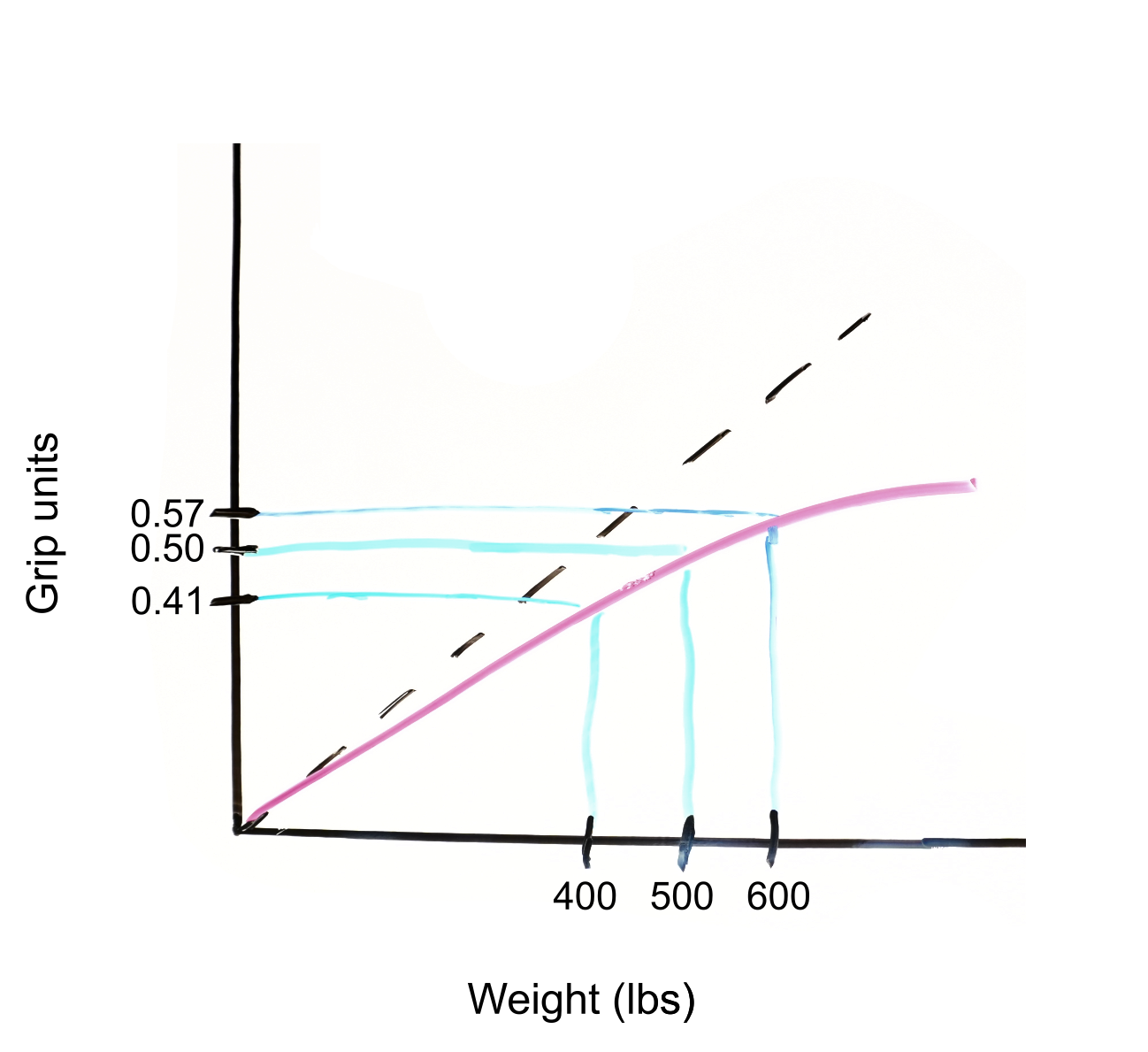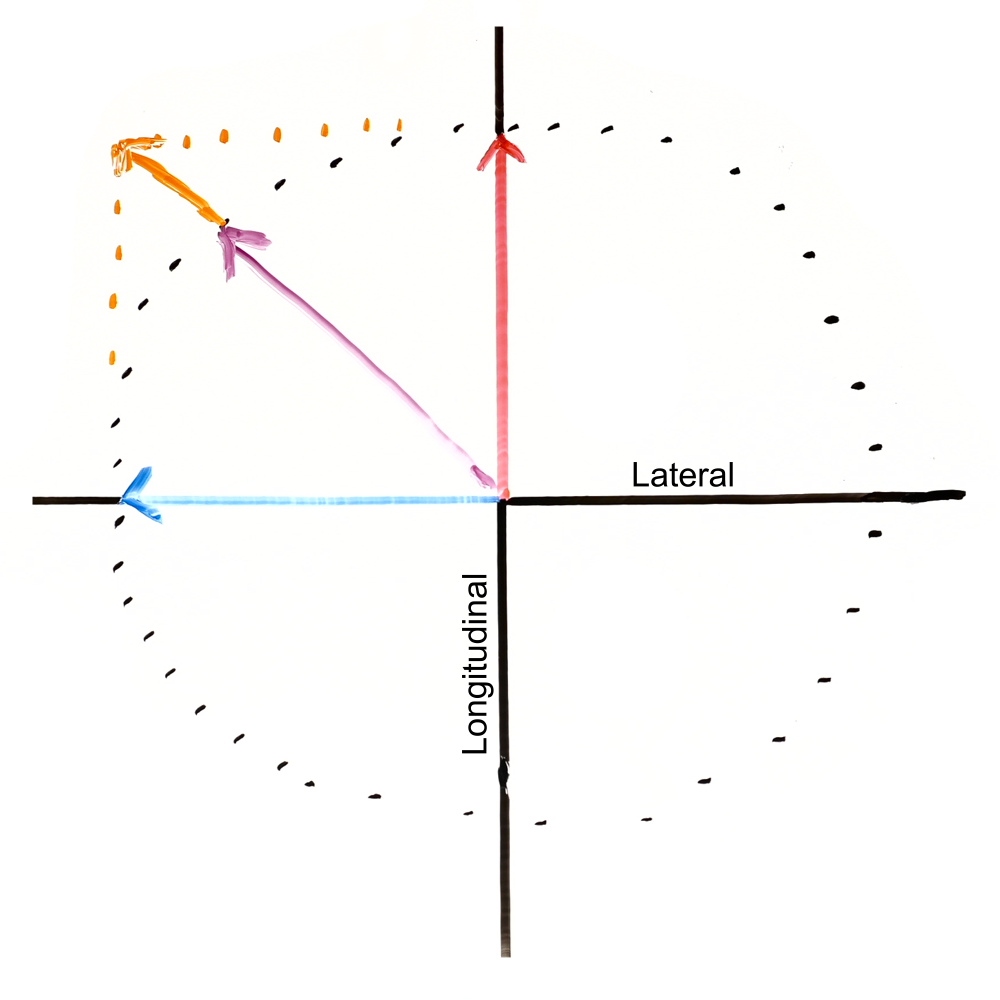Tires are the only part of a car that interacts with the road and are therefore the most important part of any race car. Of all setup and design choices that can be made, choices that improve tire grip will always yield the most performance.
As well, distributing the weight of the vehicle evenly among the 4 tires will produce the most grip due to load sensitivity, discussed below.
General
Where Grip Comes From
Tire grip comes from two sources. There is a mechanical component that comes from the roughed surface of a tire against the rough surface of the road. There is also a chemical component due to the molecular attraction of rubber to asphalt.
A tire has maximum grip when it is fresh, and this grip degrades as the tire is driven upon.
Of course, any tire, new or old, needs to be at its ideal operating temperature to generate its best grip. This can be achieved in most cases by driving a lap or two. Some racing series allow tire warmers so that the tire can be at its optimal temperature as one drives out of the pits.
Real world
Some “fresh” tires are extra slippery until they have been “scrubbed”.
When a tire is manufactured, it is placed in a mold. To prevent the rubber from sticking to the mold, the mold is first layered with a mold release compound, and thus a brand new tire will have some of this residue upon it.
The first few corners of use will rub off this release agent and rough up the surface of the tire slightly, improving its grip. This process is known as "scrubbing". In real world racing, choosing to "scrub" race tires in practice so they are roughed up and clear of release agent before the race can be a wise decision.
Degredation
Given that tire wear degrades the grip of a tire, it follows that abusing a tire with a harsh driving style will degrade the grip level faster than a gentle driving style.
Examples of harsh driving are power oversteer when coming out of a corner, forcing more steering angle into the steering wheel when the car is already understeering, locking up tires under braking, and sliding the back tires around to get through tight corners.
While these actions may help a driver get around a track faster one or two times, the long-term effect is less grip and therefore longer lap times. As well, abusing either the front or rear tires exclusively will cause them to degrade faster than the tires on opposite end, throwing off the balance of the vehicle, making it harder to handle and perhaps encouraging more harsh driving, causing a downward spiral.
Every track driver should aim to have a smooth driving style where the tires are leaned upon gently, and any over-driving comes slowly as is reacted to with subtlety and finess.
Smooth Operator
It takes a bit of time for a loaded tire to generate grip; it can’t do it all at once.
Weight must be put onto the wheels smoothly, as it takes a small (but noticeable) amount of time for the grip level to come up; even a fraction of a second is meaningful here. For this reason, “throwing” a vehicle around with sharp inputs on the steering wheel and pedals is less performant than smooth driving.
And while this is always the case in relation to the pedals, there are some situations where being quick with the steering wheel is desirable, such as when navigating chicanes. But even in this case, quick steering inputs can be done smoothly and should be preferred over snappy inputs.
Load Sensitivity
More grip comes from more load, but the returns are diminishing.

For example, if the two wheels on the right side of the vehicle each have 500 lbs on them, they will generate, let’s say, 0.5 “units” of grip each from this 1,000 lb combination; ie. 1,000 lbs total, spread evenly, creates 1 unit of grip.
However, if the same 1,000 lbs is distributed differently, say 400 lbs on the front wheel and 600 lbs on the rear, the grip on the front wheel will drop slightly less than one might expect, for instance, to 0.41 units, and the grip on the rear will rise much less than one might expect, to 0.57 units. In this case, the same 1,000 lbs on the right side tires will only generate 0.98 units of grip, because the more heavily loaded tire is giving diminishing returns in grip for the load applied.
This is why a vehicle with an even 50/50 weight distribution front and rear will have more cornering performance; the overall level of grip will be higher for the same total amount of weight over the tires.
In summary, more weight on a given tire does mean more grip, but the amount of grip is diminishing and therefore it is more effective to distribute a vehicle’s weight as evenly as possible when trying to achieve maximum grip.
Combining Forces
Tire grip is used to generate longitudinal forces (acceleration, deceleration), and lateral forces (cornering), and even a combination of the two.
If the grip is used in combination, note that the total amount of force that can be generated is the same as the peak force in the exclusive longitudinal or lateral cases.

In fact, it is fastest to mix the two cardinal forces when navigating a corner, maintaining peak force and "sweeping" it around from max braking (before corner), through combined braking and cornering (corner entry), to max cornering (mid-corner), through combined cornering and acceleration (corner exit), to max acceleration (after corner). The method and purpose of this will be described in a driving technique post. For now, it is important to understand that the max acceleration and max cornering forces cannot be combined at their individual peaks, as they would sum to a value that exceeds the ability of the tire; they must be traded off one for the other as one transitions from one cornering phase to the next.